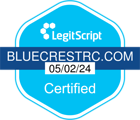For more than twenty years, the number of fatal opioid overdoses in the US has been on the rise. Data for 2019 shows yet another record: 49,860 which amounts to over 136 per day. Opioid deaths account for 70.6% of all fatal drug overdoses. Codeine, Hydrocodone, Methadone, Fentanyl, Morphine, Heroin, and Opium are all opioids.
We’ve been in an opioid crisis for so long we tend to forget. Yet the numbers are real. Those aged 25-34 are most affected – fresh adults with the world still ahead of them.
Without naloxone, (also known as Narcan), these numbers would surely be far worse. It’s an opioid antagonist, meaning it blocks the activity at opioid receptor sites in the brain. Naloxone can potentially reverse an ongoing opioid overdose. It’s cheap and/or free, and chances are you can acquire naloxone within 10 miles of wherever you are right now.
It’s critical to be as knowledgeable as possible, what with almost six fatal opioid overdoses happening every hour in America alone. Therefore, what follows is a comprehensive guide to naloxone: how it works, how to administer it, where to find it, signs of opioid overdoses, and finally tips for aftercare. Naloxone administration can cause withdrawal symptoms in the patient, which can be serious and in some cases even fatal.
How Naloxone Works
As mentioned, naloxone is an opioid antagonist. When someone uses (or abuses) an opioid-based medication or drug, opioid receptors in the brain are triggered to release endorphins, which are neurotransmitters associated with pleasure and reward. If taken as prescribed, the opioids and endorphins will safely combat pain. If abused, the brain will become overflooded with endorphins, known as a high.
When administered, either as a nasal spray or as a shot, naloxone binds to the brain’s opioid receptors and both reverses and blocks the effects of any other opioids present in the body. Although used for unfortunate purposes, it truly is a wonder drug. Normal respiration is usually restored, and the overdose slowly ends, returning the person to a relatively normal state. Thousands of lives are saved every year due its use, with a running total near 30,000 according to the Centers for Disease Control and Prevention.
How to Administer Naloxone
First and foremost, if you believe someone has overdosed on a drug, call 911. Check to see if the person is breathing, and report this during the call. If you are sure without doubt that they’re not breathing, and you know CPR, administer it.
Secondly, prior to administering naloxone, whether as a shot or a nasal spray, take these necessary precautions:
- Ask the person if they’re OK. Shout their name. Look for a response.
- Shake their shoulders and firmly rub their chest. Again, look for a response.
- If neither shouting nor shaking works, check for signs of overdose. If you’re unsure, skip to the section below titled Signs of an Opioid Overdose.
How to Administer Naloxone Nasal Spray
- Remove from the box, peel back the tab, and remove the device from its packaging.
- Hold the spray with your thumb on the bottom and first/middle fingers on either side of the nozzle.
- Providing support under the person’s neck with your free hand, tilt their head back.
- Gently insert the tip of the nozzle into one nostril until your first/middle fingers are against the person’s nose.
- Firmly press the plunger to release the naloxone into their nasal cavity. It may take several minutes to begin its effects. Repeat after 7 minutes if there is no effect.
How to Administer Naloxone Injection
- If prepackaged, remove from packaging. If not, fill a sterile syringe with 1cc of naloxone.
- Hold the syringe firmly between your first/middle fingers and aim.
- Inject straight into the muscle of the thigh, buttocks, or upper arm. Be firm, and do not inject at an angle; be sure to inject straight into the muscle.
- As with nasal spray, it may take several minutes to begin its effects. Repeat after 7 minutes if there is no effect.
If you haven’t already, call 911. Unless you are an actively trained medical professional who is experienced and capable in the field of overdose care, you need help. The amount of lives saved would be drastically higher if more people readily carried and/or knew where to acquire naloxone. This leads us to our next section.
Where to Find Naloxone
To acquire naloxone for free, search your local community. Ask your fire department, police department, healthcare facilities, insurance companies, and even friends and family about free resources. You can also take a free 20-minute training course from GetNaloxoneNow to access a tool that shows you where to acquire naloxone near you, cheaply or free.
Typically, generic naloxone costs anywhere from $20 to $40, depending on your health insurance situation and which pharmacy you choose. Narcan is available as a brand-name kit, and it can be more expensive. However, these kits usually come with multiple doses and are rather user-friendly.
A simple Google search of “naloxone near me” should also provide results. The healthcare community at large is well aware of how important naloxone is, and it’s becoming easier and easier every year to acquire. If we’re being honest, drugs aren’t cheap, whether prescription or illicit. So, what’s $40 in the grand scheme of things? It’s nothing compared to saving a life.
How do you know if someone is having an opioid overdose? It’s the obvious next question, a very good question, and we’re here to help answer it. We’re also here to remind you once again that if you are even wondering whether or not someone is overdosing, call 911.
Signs of an Opioid Overdose
Everyone is different, but the signs and symptoms of an opioid overdose are always similar. If you find yourself in a scenario where you’re unsure as to whether or not an opioid user is overdosing, check for any of the following. Even if the person is only showing one of these signs and symptoms, there could be an overdose occurring.
Signs and/or symptoms of an opioid overdose include:
- Slowed or absent breathing
- Failure to wake up or move
- Extremely small, pinpoint pupils
- Choking, heavy coughing, and/or gurgling sounds
- Cold and/or clammy skin
- Extreme dizziness and/or disorientation
- Discoloration of lips and/or nailbeds
- Slowed heartbeat and/or blood pressure
- Coming in and out of consciousness
Overdoses are almost always accidental. Whether it’s someone who took too much of their opioid prescription or someone abusing an opioid drug, an overdose can be fatal. Knowing how to administer naloxone and when can mean life or death. Here’s yet another reminder to call 911 first, before making any other responsive decisions.
Signs of Opioid Abuse
It’s also important to recognize the signs and symptoms of opioid abuse. There are far more opioid abusers than you may think, and from all walks of life. Overdoses happen instantly, and so we feel it’s critical to recognize the signs and symptoms of opioid abuse as well.
Signs of prescription pill abuse and heroin abuse are similar, apart from the obvious differences. Track marks are a telltale sign of heroin use. They appear as bruised and/or reddish-purple marks on the skin that have a wound at the center caused by a needle. Track marks usually can be found on the inside of one’s arm, but also can be found on the legs, in between fingers and toes, and even near the eyeball.
However, users are also able to snort and/or smoke both heroin and opioid pills in powder form. Signs of this type of use will not include track marks, so it’s important to be able to recognize various other signs and symptoms of abuse:
- As far as physical appearance, look for bloodshot eyes, sweating under abnormal conditions for sweating, pale skin (especially in the face), tiny pupils, and/or sudden bursts of drowsiness… or in extreme cases, “nodding off,” which is essentially falling asleep for seconds at a time.
- Overall behavior-wise, look for sudden weight loss, a jaunty appearance, an unusual lack of motivation, financial issues, secretive acts, sudden outbursts of undue anger, and/or odd sleep patterns.
- Small empty baggies, spoons with apparent burn marks, syringes, loose tan-colored powder on surfaces, pipes, vials, and/or snorting apparatuses are all associated paraphernalia. Keep a lookout for such items. Many users often have a ‘kit’ that includes all items they would need for a fix.
- If you’ve been around someone and you suspected they were on an opioid at that time, you may have noticed that person exhibit an extreme euphoria, flushing of the skin, sweating, nausea, vomiting, itching, slowed breathing, and/or dizziness. These are all short-term effects of opioid abuse.
Aftercare
Now that you know what naloxone is, how it works, and what to look for when it comes to being ready to administer it, you should know some aftercare tips. Assuming you’ve called 911 and professional help is on the way, this is a list of things you can do in the meantime. As mentioned, if you are trained and up-to-date on life-saving techniques, feel free to apply them.
If for any reason 911 cannot send help, get the person to a hospital immediately. Even if they have woken up and seem to be alert and OK, it’s critical they get examined. Opioids are among the strongest drugs known to humankind and are not to be toyed with.
NALOXONE ADMINISTRATION CAN CAUSE WITHDRAWAL SYMPTOMS! We said this already, but it’s important to know. This is why it’s NOT okay to simply administer and move along, even if the person seems fine.
If you’ve administered naloxone successfully and help is on the way, comfort the individual. Give them some water if they feel like it, some fresh air if it sounds good to them, and always some kind words of reassurance.
Afterword
In the time it took you to read this article, another few people died from an opioid overdose. In the time it will take you to train yourself and/or acquire naloxone, dozens more will perish at the hands of opioid drugs. You can help.
Use one of the links we have provided above or seek your own help today. It doesn’t matter how you fight the war against opioid deaths, it’s that you do. Educate yourself and you’ll see that it’s going to take everyday people like ourselves to win the battle.


